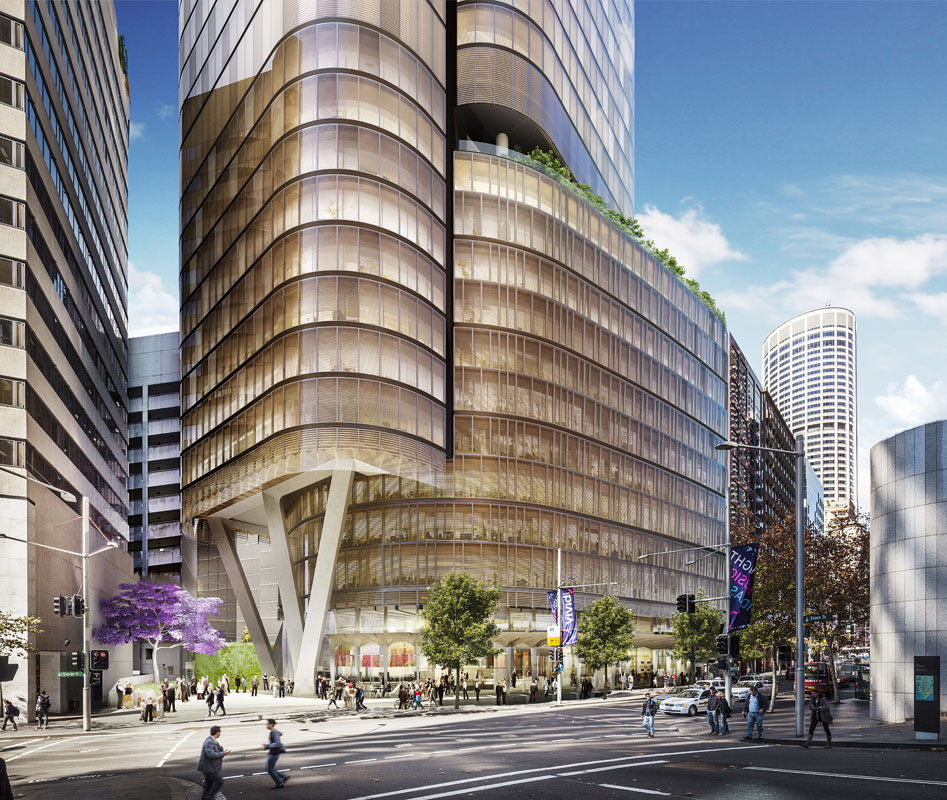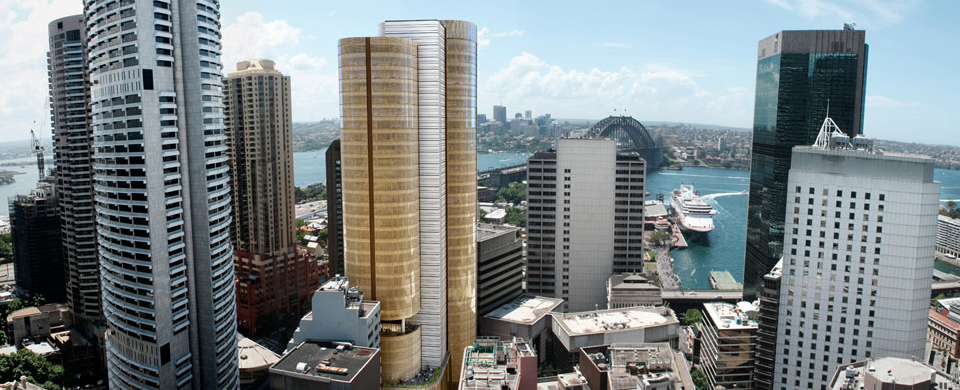A new 37-storey office and retail building by Francis-Jones Morehen Thorp (FJMT), to be erected on Sydney’s main thoroughfare, will be one of Australia’s first fully LED-lit commercial office buildings with a closed cavity façade.
200 George Street was designed by FJMT as part of a City of Sydney Design Excellence competition and was the successful project ahead of strong proposals from Architectus and Collins and Turner architects.
Renders of the building show that it will rise into the Sydney skyline in dual curvilinear forms wrapping a single rectangular core and will feature a completely glazed curtain wall. Its colour, a warm orange hue, derives from the internal timber and sandstone elements that penetrate the clear glass.

Developers Mirvac and AMP Capital have said that the building will be completely LED-lit and are expecting this to reduce lighting energy consumption by between 30-50 per cent, although their release didn’t say which lighting setup these figures were compared to.
The switch to LED lighting, says Mirvac, also means that tenants can expect to change their tubes only once every 12 years.
“There will be tangible energy savings, but the most impressive gains are to be found in the life of the LED,” said Mirvac’s David Rolls.
“The current standard T5 Troffer light tubes have a life of around two years, whereas LED lights have a greater than 10 year life cycle. This has major implications for reducing maintenance costs and will lead to a significant reduction in land-fill.”

In terms of design elements, FJMT have called on a relatively new shading system that incorporates a triple glass-paned and closed cavity façade. Whereas commercial buildings generally use double-glazed windows, 200 George Street will have three panes of glass; one exterior and two interior, incorporating interstitial timber blinds within the cavity of the exterior panes.
Mirvac have called this the first Australian example of a closed cavity façade, although the Flinders University Building at Tonsley Park, South Australia designed by HASSELL, which is nearing completion, also looks to have incorporated a bespoke closed cavity façade.

FJMT’s Richard Francis-Jones has called it the most advanced façade system achievable in the world today.
“It’s a first for Australia in that it’s a triple layer glass system with a pressurised cavity and it’s the first time in the world that wood louvres have been used in a system like that,” he said in an interview with the ABC.
“It means that we have an envelope with huge pieces of glass that brings light deep into the building and yet has such a high insulation and energy performance.”
“The units arrive on site in three layers of glass which have pumped pressurised cavities to keep the dust out.
“Within that cavity are wooden louvres, beautiful timber louvres, that are automatically manipulated by the building’s control system in relation to the position of the sun.”
Francis-Jones notes that even when the louvres are completely closed, so as to block-out the western sun, the timber still emits a heat insulated glowing light into the interiors.
Other lighting technology innovations also being used throughout 200 George Street include daylight harvesting to reduce energy consumption where natural light is sufficient around the perimeter of the floor, and a central computerised lighting control system.
The building incorporates an active chilled beam system and a varying airflow volume system. It will also encourage tenants to use environmental means of transport by offering only 63 car parking spaces for the entire building and over 300 bicycle spaces.
The project is targeting a 5 Star Green Star rating and 5 star NABERS Energy rating and is expected to be completed mid-2016.
Watch the fly-through video from Mirvac below:
Images: Mirvac/FJMT

